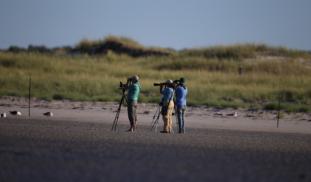Please wait...
About This Project
Manomet's International Shorebird Survey (ISS) is a Citizen Science project designed to gather information on shorebirds and the habitats they use. Hundreds of shorebird enthusiasts across the Western Hemisphere conduct surveys during migration. Data collected are fundamental for population size and trend analyses, documenting wide-scale shorebird population declines. Our goal is to increase the number of volunteers submitting surveys by 20%, leading to better data and analysis.

Browse Other Projects on Experiment
Related Projects
How do polar bears stay healthy on the world's worst diet?
Polar bears survive almost entirely on seal fat. Yet unlike humans who eat high-fat diets, polar bears never...
Uncovering hidden insect diversity associated with a likely undescribed gall-forming midge
Does a likely undescribed species of gall-forming midge (pers. comm. Ray Gagné) on Eriodictyon plants (Yerba...
Macrofungi of the California archipelago
The eight islands of the California Archipelago are a well-studied biodiversity hotspot — but we know almost...


